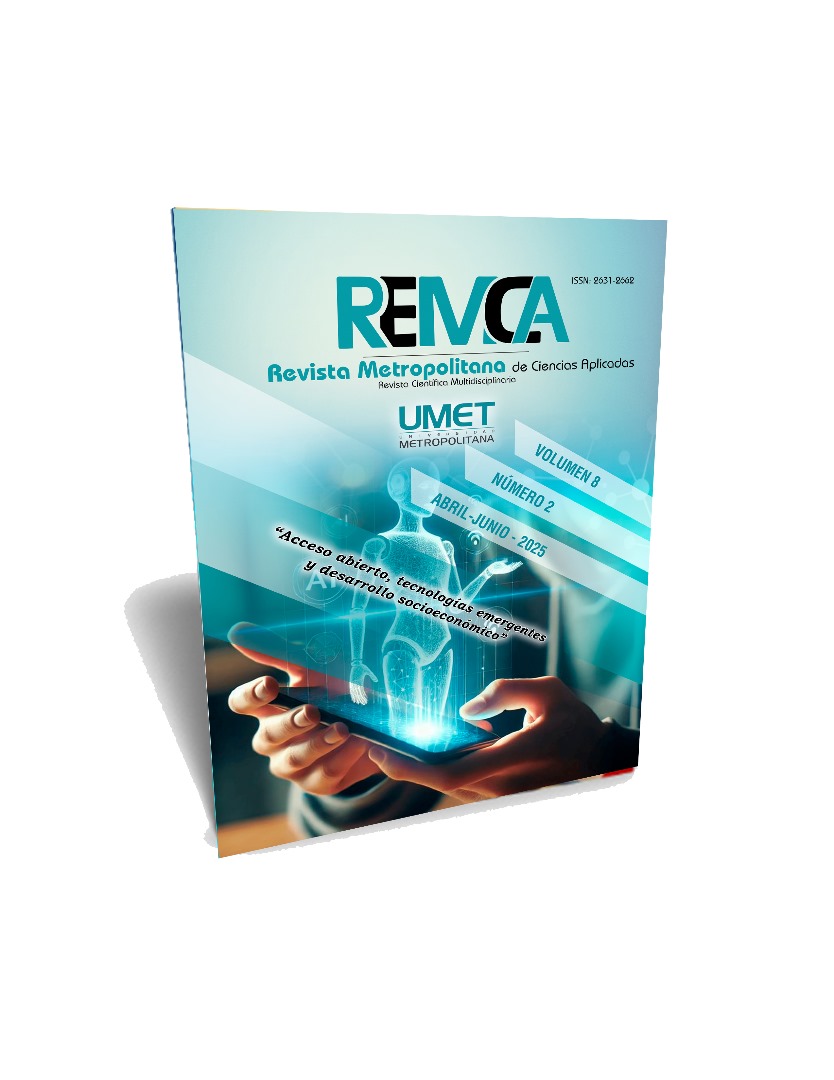Using mobile technologies and interactive applications as a strategy to reinforce natural sciences in basic education
DOI:
https://doi.org/10.62452/tscdga78Keywords:
Interactive applications, educational strategies, learning reinforcement, mobile technologiesAbstract
In the digital era, mobile technologies and interactive applications have emerged as key tools to enrich learning in various areas of knowledge. In Ecuador, the digital divide persists, especially in basic education, which limits equitable access to these innovative resources. However, in the context of natural sciences, these applications have the potential to offer immersive experiences that facilitate the understanding of complex concepts through visual and hands-on interactions. The objective of this study is to evaluate how mobile technologies can enhance learning in the natural sciences, identifying suitable applications to optimize educational processes in an uneven digital environment. A quantitative and documentary approach, with a non-experimental and descriptive design, was used to select and analyze three apps: Plickers, ARFlashcards and Object Viewer, through a technical and educational record that assessed their characteristics and functionalities. The results show that, although these applications offer a high educational potential, their effective implementation in Ecuadorian classrooms requires overcoming challenges such as the lack of adequate technological infrastructure and appropriate pedagogical support to ensure successful integration and a positive impact on teaching.
Downloads
References
Bishop, J. L., & Verleger, M. A. (2013). The flipped classroom: A survey of the research. (Ponencia). 2013 ASEE Annual Conference & Exposition. Atlanta, Georgia, USA.
Cornejo, J., & Parra, K. (2016). Impacto de las redes sociales en los procesos de enseñanza aprendizaje de la educación superior pública. Revista Boletín Redipe, 5(11), 154–175. https://revista.redipe.org/index.php/1/article/view/152
Gee, J. P. (2003). What video games have to teach us about learning and literacy. Computers in entertainment (CIE), 1(1), 20-20. https://dl.acm.org/doi/10.1145/950566.950595
León, J., Gil, J., & Morales, M. (2017). Los paradigmas de investigación educativa, desde una perspectiva crítica. Revista Conrado, 13(58), 72- 74. https://conrado.ucf.edu.cu/index.php/conrado/article/view/476
Matienzo, R. (2020). Percepciones de docentes sobre el aprendizaje móvil en Educación Superior. Educación Superior, 7(2), 38–48. https://www.scielo.org.bo/scielo.php?script=sci_arttext&pid=S2518-82832020000200007
Morales, D. (2018). Percepciones docentes acerca de los dispositivos móviles para la enseñanza. (Tesis de maestría). Universidad Pontificia Bolivariana.
Ramírez, P. E. (2016). Tecnologías móviles. https://sites.google.com/site/ticsmielca/tecnologias-moviles
Valencia, A., Benjumea, M., Morales, D., Silva, A., y Betancur, P. (2018). Actitudes de docentes universitarios frente al uso de dispositivos móviles con fines académicos. Revista mexicana de investigación educativa, 23(78). https://www.redalyc.org/journal/140/14057728005/html/
Zhao, Y., Pugh, K., Sheldon, S., & Byers, J. L. (2015). Conditions for classroom technology innovations. Teachers College Record, 117(3), 1-47. https://eric.ed.gov/?id=EJ649784
Downloads
Published
Issue
Section
License
Copyright (c) 2025 María del Cisne Esparza-Cajilima, Marcelo Efraín Chocho-Tapia, María Gabriela Jurado, Luis Alberto Alzate-Peralta (Autor/a)

This work is licensed under a Creative Commons Attribution-NonCommercial-ShareAlike 4.0 International License.
Authors who publish in Revista Metropolitana de Ciencias Aplicadas (REMCA), agree to the following terms:
1. Copyright
Authors retain unrestricted copyright to their work. Authors grant the journal the right of first publication. To this end, they assign the journal non-exclusive exploitation rights (reproduction, distribution, public communication, and transformation). Authors may enter into additional agreements for the non-exclusive distribution of the version of the work published in the journal, provided that acknowledgment of its initial publication in this journal is given.
© The authors.
2. License
The articles are published in the journal under the Creative Commons Attribution-NonCommercial-ShareAlike 4.0 International License (CC BY-NC-SA 4.0). The terms can be found at: https://creativecommons.org/licenses/by-nc-sa/4.0/deed.en
This license allows:
- Sharing: Copying and redistributing the material in any medium or format.
- Adapting: Remixing, transforming, and building upon the material.
Under the following terms:
- Attribution: You must give appropriate credit, provide a link to the license, and indicate if any changes were made. You may do this in any reasonable manner, but not in any way that suggests the licensor endorses or sponsors your use.
- NonCommercial: You may not use the material for commercial purposes.
- ShareAlike: If you remix, transform, or build upon the material, you must distribute your creation under the same license as the original work.
There are no additional restrictions. You may not apply legal terms or technological measures that legally restrict others from doing anything the license permits.




